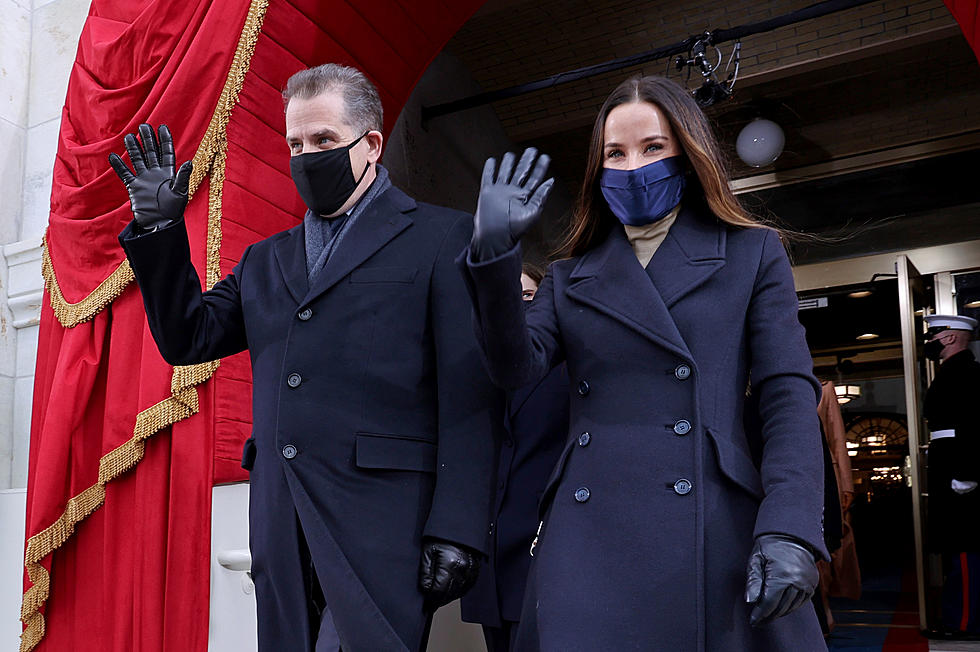Exhibit Focuses On Scientists’ Role In Holocaust
NEW ORLEANS (AP) — A National World War II Museum exhibit about the role scientists and doctors played in the Holocaust includes a drawing copied from a brochure.
It shows a young, blindfolded couple at the edge of a jagged precipice. The German-language text says, "Don't go blindly into marriage!"
The image is in a section of the display about mainstream ideas from which Adolf Hitler's twisted policies grew.
Dr. Benjamin Sachs, dean of the Tulane University School of Medicine, said the exhibit shows "there was a slippery path toward the extermination program" and holds important lessons for today.
The traveling U.S. Holocaust Memorial Museum exhibit, "Deadly Medicine: Creating the Master Race," will be at the New Orleans museum through mid-October. Tulane plans a series of related lectures.
Sachs said the exhibit fits in with recent discussions of sterilizing people on Medicaid, and people who are uninsured. The exhibit also goes a long way to help medical students understand why there are so many restrictions on human medical research.
Millions of Jews — as well as people of other ethnic groups deemed undesirable by Hitler's Nazi Party — died in a genocide that has become known as the Holocaust.
Among the topics covered in the exhibit is eugenics, the concept that medicine and social programs were letting "unfit" people reproduce to humanity's detriment.
In the turbulent Europe of the 1920s and '30s, a movement spread in many countries that mentally ill or handicapped people, alcoholics and others with disabilities should be sterilized. People considered healthy and intelligent were encouraged to have large families, the base of what the Nazis framed as the creation of a master race.
A Nazi-era image in exhibit — used in schoolbooks and educational displays at the time — shows a young blond man bowed under the combined weight of a scrawny man with a flask in his pocket and a thuggish-looking man who may have been meant to represent the disabled. The caption reads, "You Are Sharing the Load! A hereditarily ill person costs 50,000 reichsmarks on average up to the age of sixty."
The exhibit — which will move in October to the University of South Dakota library in Vermilion, S.D., and in January to the University of Arizona Health Sciences Library in Tucson — is a distillation of one first shown in 2004 at the Holocaust Museum in Washington. A traveling exhibit, with artifacts, was shown in about 20 museums, starting in Dresden, Germany.
This one, designed for libraries or single museum galleries, has photographic panels with explanations, interspersed with black-and-white footage from the times. The movie footage includes film of German scientists using calipers to measure faces and bodies and of early experiments with gassing. In the latter footage, emaciated German psychiatric patients are made to undress, then are led into a sealed building into which auto exhaust is piped.
At the end is a color video of survivors including a twin brother and sister who survived the Auschwitz concentration camp and an artist who awoke in a mental institution for children to the realization that none of the babies was crying and their beds were empty.
In touring the exhibit this week, retired teachers Rita Colburn and JoAnn Arceneaux looked at a 1936 German newspaper graphic titled "We do not stand alone," showing flags of a dozen other nations where forced sterilization laws had been passed or proposed. The U.S. flag is at the top left: Indiana had passed a law allowing sterilization in 1907, and 20 years later the U.S. Supreme Court upheld Virginia's law allowing sterilization of the "feebleminded." More than 30 states enacted such laws. Other flags include those of Denmark, Norway, Sweden, Finland, Canada and England.
The Nazis enacted a forced-sterilization law in 1933.
"I didn't know the progressive countries did that," Colburn said.
"I didn't know it was so widespread an attitude," Arceneaux answered.
Killing "incurables" in Nazi Germany became policy in 1939, starting with children with birth defects. Between 1939 and 1945, Nazi doctors and nurses killed more than 5,000 children, according to the exhibit. A typed file card from the Kaiser Wilhelm Institute for Brain Research acknowledges receipt of 697 children's brains from one institution.
An estimated 200,000 adults in hospitals and mental institutions were gassed, starved or overdosed in hospitals, according to the exhibit.
Others died in the medical experiments carried out at Nazi death camps by Dr. Josef Mengele — the Auschwitz "Angel of Death" — and others.
More From News Talk 96.5 KPEL









